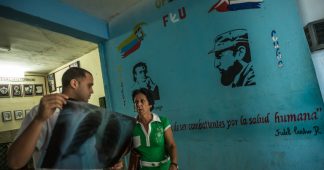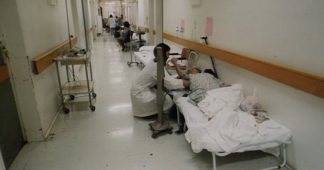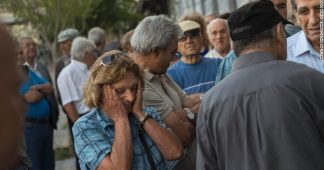BY Dr. J. E. Williams
2 Νοε 2012
At the time of the Cuban revolution, the largely rural population of the largest island in the Caribbean had an average annual income per person of $91.25—one eighth of that of Mississippi, the poorest state in the USA. Only 11% of Cuba drank milk, 4% ate meat, 2-3% had running water, and 9.1% had electricity. About 36% had intestinal parasites, 14% had tuberculosis, and 43% were illiterate. Today, 100% of Cubans can read and write and all Cubans have access to health care.
By 1962, Cuba was immersed in a period of upheaval, marked by the implementation of the U.S. economic embargo, a commercial and financial blockade of the country. In the midst of these difficult circumstances, and encouraged by the United States, there was an exodus of professionals, particularly doctors. By October of 1962, more than 3,000 medical professionals had left the country, half the total of 1,959.
In response, Fidel initiated a daring program for the massive training of doctors, as announced at the inauguration of the Victoria de Girón Institute of Basic Sciences and Preclinical Studies (ICBP) on October 17, 1962. He proposed that the future of the Cuban public health system was to train a new kind of medical professional. Fidel wanted “doctors divested of any sense of egotism and mercantilism.” The idea was to educate medical professionals committed to the people.
The Institute inculcated the idea that the duty of medical professionals was to be where they are most needed—that human suffering should not be treated as merchandise. Doctors should be examples of modesty, ethics, altruism, training, excellence and good treatment, exhausting all possibilities to save lives and to prevent illness. To this end, they have also included sustainable medical therapies like acupuncture, homeopathy, botanical medicine, and ozone therapy, and developed an array of natural medicines into the natural health care system.
Cuba As A Healthcare Destination
Cuba wants to be a medical tourism destination. It already has a major medical campus for foreign patients on the outskirts of Havana where all types of medical conditions are treated.
Biomedical research in Cuba is the best in Latin America. The Molecular Immunology Center (CIM) developed several novel drugs, including: CIMAher – a monoclonal antibody for treating head, neck and esophagus tumors; and iorEPOCIM for the treatment of chemotherapy or radiotherapy-induced anemia in cancer, AIDS, and chronic-renal pediatric patients. Another CIM product is a therapeutic vaccine, CIMAVax–EGF intended for patients suffering from advanced lung tumors.
Another group, Labiofam, manufactures VidatoX 30 CH, a natural homeopathic drug made from the venom of a blue scorpion, Rhopalurus junceus, which is only found in Cuba. Escozul, the brand name drug, is used for improving patients’ quality of life and increasing the survival rate of advanced cancer patients. More than 45,000 people have undergone treatment with Escozul in Cuba. It is believed to improve the immune response to tumor activity.
The Placeta Histotherapy Center in Havana developed an extract of human placenta for the treatment of skin disorders including vitiligo, psoriasis, and alopecia. In the early 1970s, Cuban researchers cooperated with MERIUX Laboratories in France to investigate a substance in placenta that stimulates skin pigment molecules. By the late 1980s, the new Cuban placenta product Melangina was approved for human use and is now used worldwide for the treatment of vitiligo.
Cuban Natural Medicine
In 1992, two years after Cuba lost its long-time market and supplier in the collapsed East European countries, heath care researchers began a major effort to recover the use of medicinal plants and incorporate alternative therapies like acupuncture into the national health care system.
Cuban health professionals realized that natural remedies are not in contradiction to conventional medicine, but instead can be effectively integrated, thus broadening the spectrum of treatment possibilities. In accordance with a program implemented in 1996, traditional and natural therapies are used in nearly all of Cuba’s outpatient clinics and 60 percent of the country’s 30,000 primary care doctors are trained to use integrative therapies. They also created centers to educate and provide medical care in traditional and herbal techniques in each of Cuba’s 169 municipalities.
Labiofam also develops natural products as nutritional supplements, including: Ferrical (a natural and organic nutritional product which minimizes anemia), Asmacan (a natural dietary supplement for patients with respiratory diseases), Propolina (obtained from bees and used as an anti-bacterial, anti-parasitic treatment, and for scar-tissue formation), Acitan (for improving the large intestine function and helping in healing inflammations, oxidation and auto-immunity in adults), and Nutrisol (for healing wounds, burns, counteracting alcohol intoxication and in liver, renal and lung diseases, among others).
As with all gastric complaints, even chronic diverticulosis and Crohn’s disease, dietary fiber is imperative. Insoluble fiber in the form of banana extract (Acitan) manufactured from the non-fruiting stem of the banana plant has been extensively researched in a wide variety of gastro-intestinal diseases, including idiopathic ulcerative colitis and irritable bowel syndrome. The fiber content in banana extract is particularly beneficial in regulating peristalsis. It also has anti-microbial properties, actively killing pathogenic intestinal bacteria. Additionally, it’s an important natural source of minerals including iron, manganese, selenium, copper and zinc —all vital in the production of the mucous lining that protects the lower gut.
The future of Cuba as a healthcare destination looks bright. It’s willingness to integrate alternative and natural therapies makes for a more humane medicine. And, their advanced research centers continue to develop novel drugs and evidence-based natural medicines that have low impact on the environment, but have high improvement ratings for patients. Future progress in Cuban medicine and research depends on a change of politics on the island and lifting the U.S. embargo.
Published at http://renegadehealth.com/blog/2012/11/02/cuban-health-care-a-good-example-of-integrating-alternative-therapies











